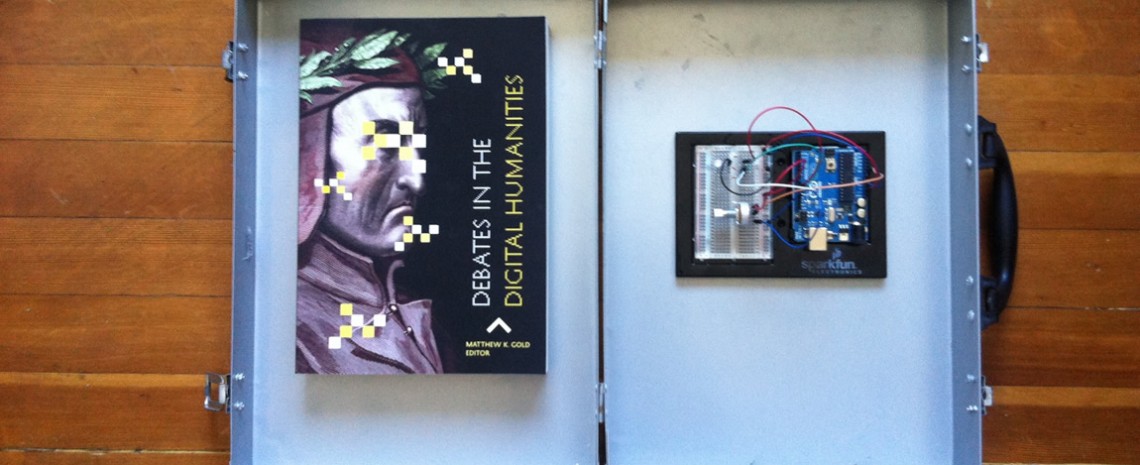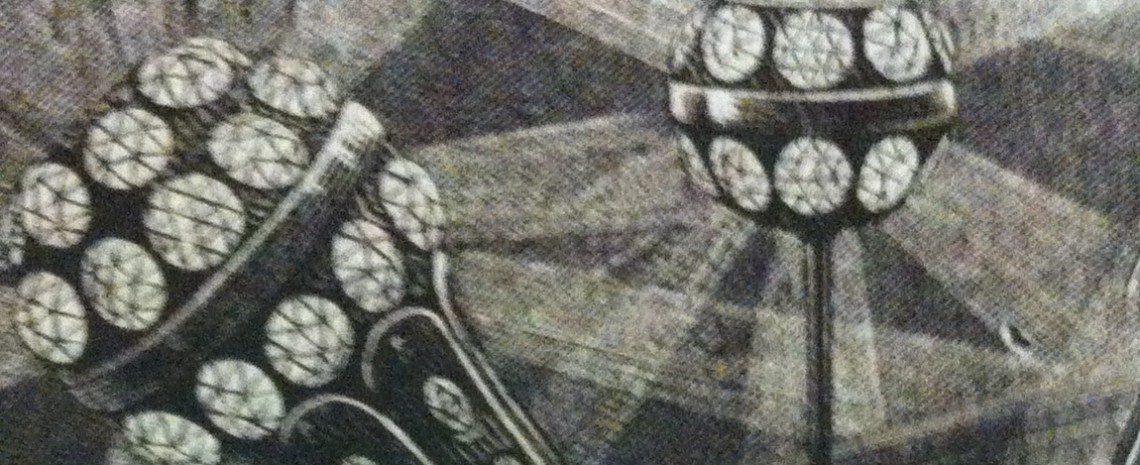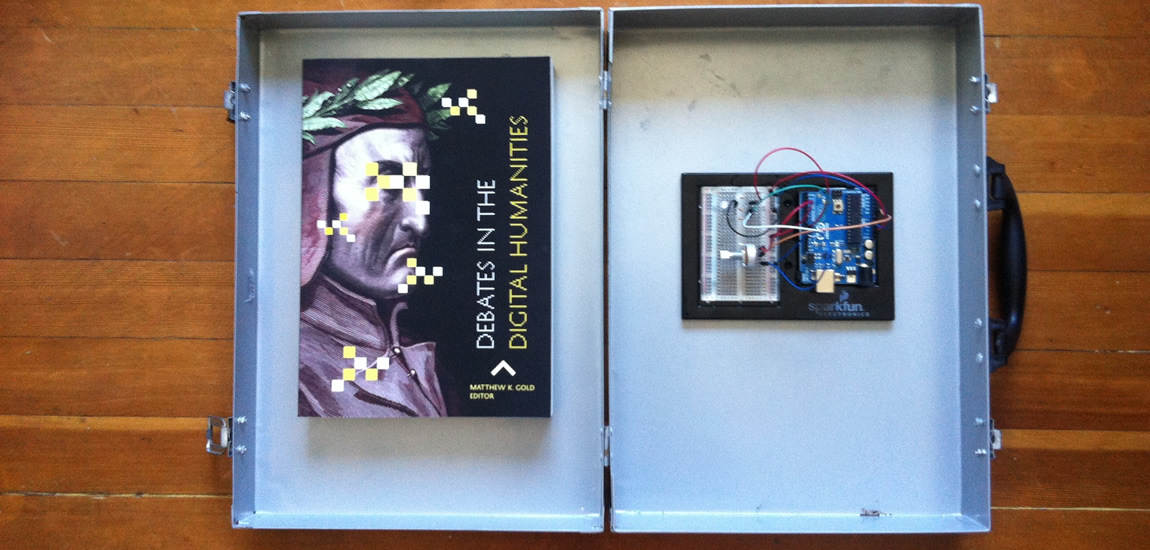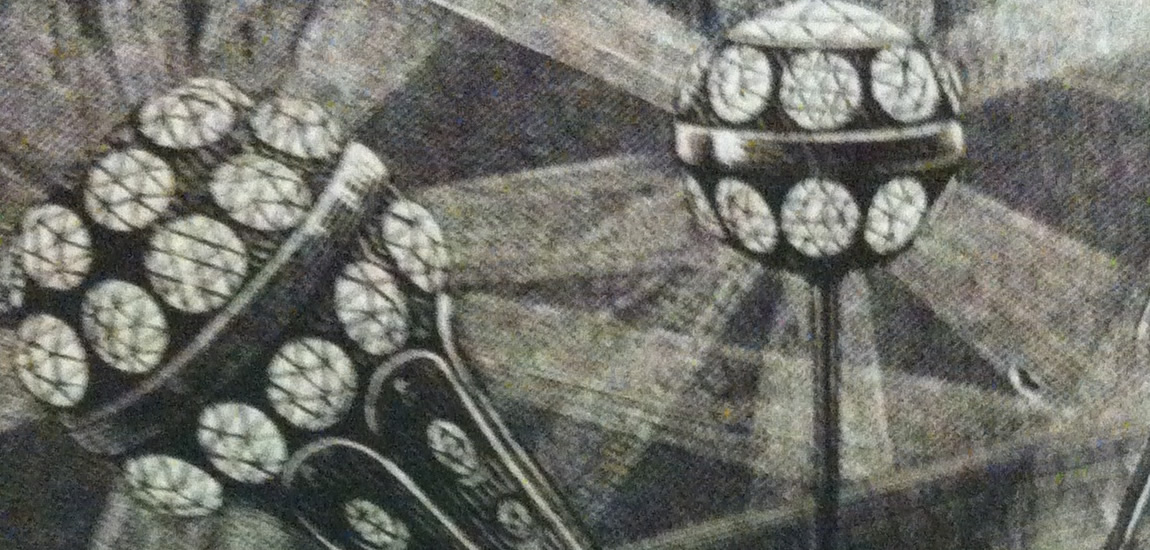This summer in the Maker Lab, I am researching potential case studies, histories, and stories that will translate well into “Kits for Cultural History.” While, in comparative media studies, there are thousands of interesting stories about unique devices and curious practitioners, for this project we gave ourselves a specific challenge: to create a kit that—by inviting hands-on engagements with the material dynamics of historical experiments, media, and technologies—enriches the academic arguments we typically find in scholarly journals and monographs. In this blog post (which is the first in our “Publish This Kit” series), I want to compare the scholarly kit with the scholarly essay and ruminate on what modes of persuasion the kit format affords.
At its most basic level, a scholarly humanities essay usually consists of a thesis statement (or claim); some context, history, relevant scholarship, and examples that function as evidence; and various rhetorical devices reflecting generic conventions. This combination typically leads to an argument that the reader comprehends and then chooses to accept (if only in part), resist, or refute. As I am thinking about ways to approach the first few scholarly kits we will be developing during 2013-14, I recognize that the kit format could loosely consist of similar components, but with a few key differences. First, when compared with a written essay, the kit might place more burden on audiences to assemble, assess, and think critically through an argument about media and technologies. That is, it might be more elliptical, or less direct, than most academic essays. Second, the kits would be embedded in—and in some ways perform—a story that situates and organizes key historical elements (e.g., the objects, subjects, and settings involved in a particular case study). In some ways, then, the position or stance of the contributing scholar(s) might be less overt than in many monographs or journal articles. Third, the kit would contain evidence in a variety of forms, some of which might be text-based, while others might consist of audio, video, 3D models, electronics, images, schematics, etc. All of these components would function as evidence that tells, enacts, or implies a story and also contextualizes a media object (e.g., a computer game, phonograph record, or piece of jewellery) through historical perspectives. Finally, the kit would still apply identifiable rhetorical devices. But rather than limiting itself to written or spoken language, it would include other forms of rhetoric to encourage assembly, experimentation, and critical engagement.
The most notable approach to persuasion can be found in the rich history of oral and written rhetoric. Dating back to ancient Greece, rhetoric offers a well-studied practice of discourse and persuasion. Even when not formally studied, rhetorical devices and practices (e.g., appeals to logos, ethos, and pathos) that sprang out of classical rhetoric commonly appear in scholarly essays in one way or another. However, rhetoric can also apply to other forms of communication. For instance, visual rhetoric consists of the persuasive use of photography, film, and illustration, which do not argue in the same way as text. Elsewhere, in Persuasive Games, Ian Bogost extends rhetoric studies by unpacking the persuasive power of videogames through what he calls “procedural rhetoric,” or the “practice of authoring arguments through processes […], through the authorship of rules of behavior, the construction of dynamic models” (29).
Following Bogost and others (e.g., journals like Kairos and Vectors), the kit format combines rhetorical modes to make claims about the material dimensions and dynamics of history. When making an argument, bringing together multiple approaches to rhetoric offers a unique alternative to more commonplace (yet still necessary) modes of (proto)print scholarly communication. As Bogost notes in his discussion of procedural rhetoric, procedural representations are often interactive, relying on the user as well as the digital device (35). In the kit format, the level of interaction and actual experience shifts depending on what components audiences are engaging. Here, consider how someone might think through a circuit board in order to better understand histories of computation or electronics. Or imagine the ways in which fabricated 3D objects might—much like the KMODDL project at Cornell—allow audiences to learn more about the mechanics and motion of old media. Put differently, the kits rely on the assumption that a built object makes a tacit argument, even if that argument and its assumptions are historically contingent and situational.
Taking one of our planned kits as an example, the history and cultural relevance of early wearable technology could be effectively communicated through a multimodal approach inviting experimentation and tinkering. The “Flash Jewellery Kit” we are currently developing will focus on the 1884 fashion trend to install battery-operated lights into jewellery such as brooches and diadems. While the kit will still contain written pieces—such as an original essay on gender dynamics, fashion, and early electricity—it will also contain aspects of 19th-century print and visual culture (e.g., historical images). Furthermore, 3D models (e.g., OBJ files and ABS prints) of jewellery pieces, as well as the component electronic parts necessary to produce expressions with light, will add layers of procedural rhetoric and physical interaction to the kit. As Hod Lipson, et al. describe in their documentation of the rapid prototyping process used to 3D-print historical mechanisms, such physical interaction draws attention to the intricacies of the historical materials used, the costs of production then and now, and the minuscule shapes and spaces that make up such mechanical devices. Seeing and touching the types of artifacts that were fashionable in the late 19th century and then going through the process of creating an electric circuit (that, say, turns on a light) will inevitably enrich the knowledge already produced by reading and writing scholarship. For instance, the “Flash Jewellery Kit” will facilitate not only an understanding how early electric light and expressive jewellery worked but also a consideration of what it meant for those technologies to be exhibited and worn by women in the 19th century. As such, an engagement with the material particulars of light and jewellery should also spark inquiry into the material dynamics of embodiment and perception (dynamics that have long been the focus of feminist media studies).
Since each kit will present a different story, history, and argument, our team will have opportunities to explore a variety of media and rhetorical modes throughout the prototyping, composition, and testing stages of the kits. As we work through these stages, I am sure that we will discover new rhetorical approaches that can be enacted and launched via the kit format. For now, we welcome your feedback.
In our next post in the “Publish This Kit” series, we will consider how “Kits for Cultural History” correspond with other approaches to prototyping, not to mention what prototyping has (if anything) to do with material history.
Post by Nina Belojevic, attached to the KitsForCulture project, with the physcomp and fabrication tags. Aside from “Electric Jewels” by G. Trouvé, featured images for this post care of Nina Belojevic. Debates in the Digital Humanities was published by the University of Minnesota Press in 2012 and edited by Matthew K. Gold.






Pingback: Maker Lab in the Humanities » University of Victoria » Packaging Design and Material History()
Pingback: Maker Lab in the Humanities » University of Victoria » Publish This Kit (Part II)()
Pingback: Maker Lab in the Humanities » University of Victoria » Debuting Our Early Wearables Kit()
Pingback: Maker Lab in the Humanities » University of Victoria » Making as Scholarship()
Pingback: Maker Lab in the Humanities » University of Victoria » The Kits for Cultural History at HASTAC 2014()
Pingback: Maker Lab in the Humanities » University of Victoria » Kits for Cultural History()